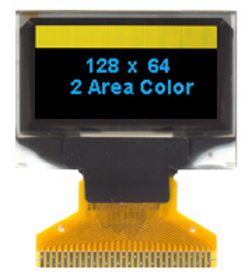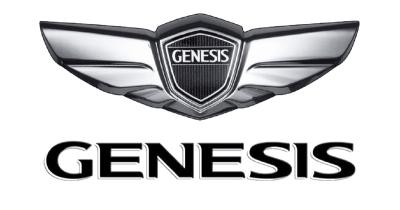OLED displays use organic materials that emit light when electricity is applied. OLEDs enable emissive, bright, thin, flexible and efficient displays - and so OLEDs are set to replace LCDs in all display applications - from small displays to large TV sets.
An AMOLED display is an OLED display that is driven by an active matrix backplane, it is a type of OLED display that can achieve high performance. Most OLED displays such as the ones used in TVs and smartphones are actually AMOLED displays.

What does AMOLED mean?
The term AMOLED means Active-Matrix OLED. The 'active-matrix' part refers to the driving electronics, or the TFT layer. When you display an image, you actually display it line by line (sequentially) as you can only change one line at a time. An AMOLED uses a TFT which contains a storage capacitor which maintains the line pixel states, and so enables large size (and large resolution) displays.
AMOLEDs today
AMOLED displays today are used in many applications - and are most common in smartphones. Most smartphones today use AMOLED displays - including the latest Samsung phones, all of Apple's iPhones models and more.
AMOLED displays are also used in OLED TVs, many wearables (such as the Apple Watch), tablets, laptops, VR headsets, monitors, and more.
AMOLED vs PMOLED
A PMOLED uses a simpler kind of driver electronics - without a storage capacitor. This means that each line is turned off when you move to the next line. So let's say you have 10 rows in your display - each row will only be on 1/10 of the time. The brightness of each row has to be 10 times the brightness you'd get in an AMOLED. So you use more voltage which shortens the lifetime of the OLED materials and also results in a less efficient display. So while PMOLEDs are cheaper to make than AMOLEDs they are limited in size and resolution (the largest PMOLED is only 5", and most of them are around 1" to 3"). Most PMOLEDs are used for character display, and not to show photos or videos.

Flexible, foldable and rollable AMOLEDs
One of the main advantages of AMOLED displays is that they can be made flexible. Flexible AMOLEDs are already popular for many years in smartphones and wearables, and in 2019 we will experience the first foldable devices and rollable screens.
Looking to buy AMOLED displays?
Are you looking to buy AMOLED display for your project? AMOLEDs on the market range from small 1-inch ones for smartwatches through large OLEDs used in tablets and laptops - to large TV panels, up to 97" in size. Visit our OLED Marketplace, the world's most comprehensive OLED catalog, where you can browse the available panels, and let us help you find the best AMOLED supplier for your needs!
Further reading
The latest AMOLED news:
New laser repair system developed to fix AMOLED smartphone screen defects
An interesting video review shows a new repair system, based on lasers, that can fix defects in smartphone AMOLED displays. The system uses optical microscopy to find defects in operating OLED displays, and then a laser is used to fix the problems:
Such systems can be useful, but of course won't be able to fix all problems and defects in AMOLED displays, only ones that were caused by physical problems in conductive lines in the OLED module, that can be fixed by lasers. It will be interesting to see if these machines will truly find a place in the OLED repair aftermarket scene.
DSCC: the AMOLED material market to resume growth in 2023, to reach $2.18 billion in 2027
DSCC expects the AMOLED stack material market to grow 4% in 2023, to $1.4 billion, and to reach $2.18 billion in 2027, that's a 12% CAGR from 2023 to 2027. In 2022, the market declined by 10%. The forecast does not include any UDC revenues from blue PHOLED materials, which means that if UDC succeeds in commercializing its blue material, revenues could be higher by hundreds of millions of dollars.
DSCC says that demand for OLED TVs will continue to decline in 2023. In 2022, revenues of OLED TV revenues declined by 17%, and in 2023 revenues will decline 3% further. Growth will resume, though, in 2024, and in 2023-2027 the market will grow at a CAGR of 13%.
Samsung Electronics stops its BOE OLED review process as the tension between the two companies rises
According to reports from Korea, Samsung Electronics considered adopting AMOLED display produced by BOE for its next flagship smartphone, but the company has halted the review process as the two companies are in the midst of an IP dispute.
A few months ago Samsung filed a motion with the US ITC to halt the import of aftermarket AMOLED displays produced by BOE. A group of OLED makers in China, which includes BOE, answered with a motion of their own, to dismiss an SDC AMOLED patent. This legal battle continues, and the tension between Samsung and BOE is on the rise.
AUO may close down its AFPD OLED fab in Singapore as it focuses on microLED for next-gen wearable and automotive displays
AU Optronics has a 4.5-Gen AMOLED production line in Singapore, active since around 2013. The AFPD line is a small-scale operation, and AUO never managed to expand its capacity and compete with large AMOLED producers.
According to a report from Japan, AUO is now considering closing down the AFPD line, and converting it to microLED R&D production line. It could move it back to Taiwan, or retain Singapore as a hub for AUO in Southeast Asia. The company will make a final decision, it seems, in early 2024.
Genesis to use Samsung's 25" AMOLED displays in its next-gen automobiles
According to reports from Korea, Hyundai Motor decided to adopt Samsung Display's 25" AMOLED displays in its next-generation Genesis car, a horizontal dashboard display.
Samsung already supplies AMOLED displays for Hyundai's Ioniq 5 (digital side mirrors), but this is the company's first design win for Genesis.
Visionox shows its latest OLED prototypes and technologies at Display Week 2023
China-based Visionox demonstrated many OLED displays and new technologies at Display Week 2023.
So first up, we have some rollable and foldable OLEDs. You can see some impressive looking such flexible OLEDs in the video above, and Visionox featured many such displays at their booth.
Sigmaintell: production of OLED smartphone displays in China to jump 40% in 2023
Most analysts seem to agree that global demand for OLED displays is set to slow down in 2023. DSCC says that revenues will decrease 7% in 2023, led by a drop in demand for OLED smartphone and TV displays. Omdia also agrees, saying that OLED fab utilization remains low.
China-based Sigmaintaell, meanwhile, is optimistic on China's own OLED industry, expecting production to jump 40% in 2023. Sigmaintell says that Chinese phone makers are increasing their adoption of OLED displays in high-end and mid-range models. The company's analysts expect over 220 million Chinese OLED panels to ship in 2023, and China's OLED market share to rise to 38%, up from 28% in 2021.
A new version of OLED-Info's Automotive OLED Market report released
Today we published a new edition of our Automotive OLED Market Report, with all the latest information. The new edition includes three new car models, updates from Samsung, JDI and JOLED, new market forecasts and more. The adoption of OLED technologies by the automotive is accelerating and expected to continue in the future.
Reading this report, you'll learn all about:
- OLED advantages and challenges
- PMOLED and AMOLED displays adopted in cars today
- Why OLED lighting is exciting for car makers
- All about flexible and transparent OLEDs
The report package also provides:
- A directory of all OLED automotive display makers
- OLED lighting roadmaps
- Personal contact details into leading OLED produces
- Car concepts with OLED technologies
- Free updates for a year
This OLED Automotive market report provides a great introduction to OLED display and lighting solutions for the automotive industry. This is a great guide for anyone involved with the automotive market - car makers, suppliers and aftermarket solutions.
HKC to start making AMOLED displays in collaboration with JDI using its eLEAP production technology
In 2022, Japan Display (JDI) announced that it has developed a "historic breakthrough in display technology" - a new OLED deposition process which they refer to as eLEAP, that is said to be cost effective and can be used to create freeform OLEDs that are brighter, more efficient, and longer lasting compared to OLEDs produced using mask evaporation (FMM).

We now hear that China-based LCD maker HKC Corp has signed an agreement with JDI to adopt its technology for mass production of AMOLED displays. Under the agreement HKC will invest billions to build AMOLED factories in China, while JDI will provide the manufacturing expertise and technologies, including eLEAP. The plan is to begin mass production in 2025, with the first applications to be in automotive displays and wearable devices.
Omdia: small-size AMOLED display shipments down 6% in 2022
Omdia says that small-size (under 9") AMOLED display shipments dropped 6% in 2022 to 762 million units, due to lower demand for smartphones.
Samsung remains the leading AMOLED maker, with a 56% market share (by unit), down from 61% in 2021, with BOE in the second plane (12%) and LG Display in the third place (11%). The next producers by shipments are Visionox and Everdisplay.
Pagination
- Previous page
- Page 3
- Next page










